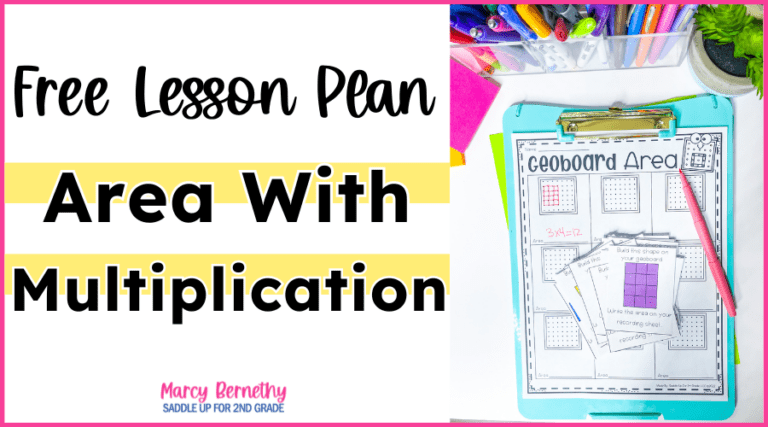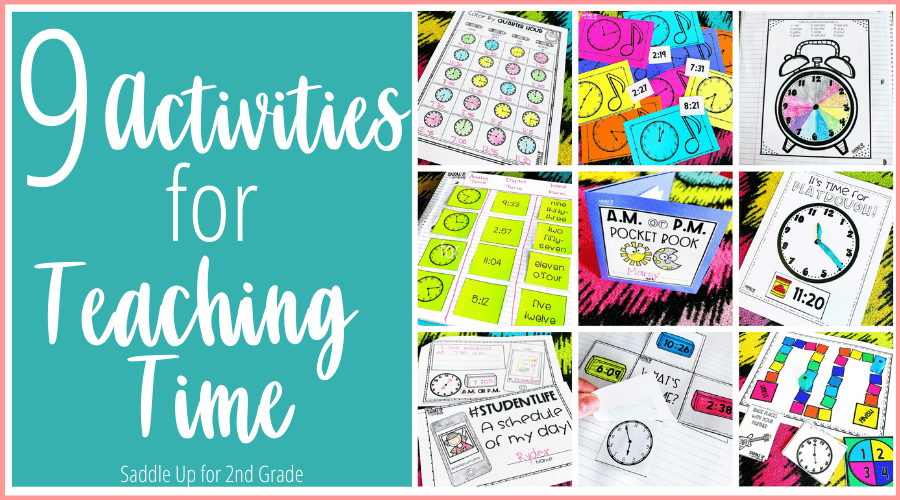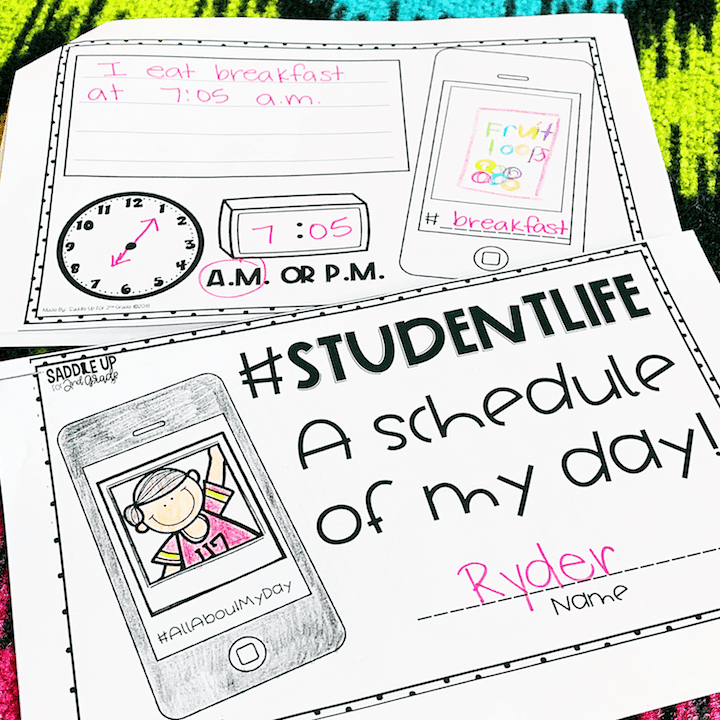

Join me for a FREE, Guided Math workshop to discover how to easily incorporate Guided Math into your current schedule!
Teaching time to students can be so fun! Students love to learn how to tell time to the minute, 5 minutes, half hour, and more! There is an endless amount of time games and activities for telling time included in my time unit that you can use that will leave your students begging for more. Let’s dive into some telling time activities you can use today!

A great introduction to new math skills, is creating and using an anchor chart. Students also have a copy in their math journal. As we create our large chart whole group, they are also creating one in their journal for them to always have reference too. This anchor chart is the first step in help your students understand the concept of time and it works as an introduction to time vocabulary.

It is so important for students to understand which hour owns the space between the numbers on a clock. We use this Clock to the Hour Journal Activity and they will color the spaces on the clock based on the directions given.
Once they’ve colored their clock, I’ll call out directions and they have to mark the space of the clock that is called out.
Example: Mark the space that belongs to the 4.

When first learning to identify time on an analog clock, I have them draw “hops” around the clock to represent the minutes. Have them start at the 12 and skip count by 5’s out loud until they get to the minute hand.

Use a blank clock template or the one from my telling time unit. Call out a time and have students use Playdough to create the hour and minute hands to place on their own clocks to show the time called out. This is a hands-on way for students to comprehend the tricky concept of telling time.

Another fun way to review time is to create a timeline or daily schedule of your day. We use these #studentlife booklets. On each page they come up with a hashtag, write the time of the event in digital form, and draw it on their analog clock. Then they write a sentence and illustrate.

What you need:
You can find this game and over 70 more activities for every 2nd grade standard in the FREE Small Groups Activity Guide!! Simply fill out the form below to have it sent straight to your inbox!
Creating a linking cube clock is great for introducing telling time to the minute. The dots in between each hour number on the clock represent one minute. This telling time activity gives a great visual for students to really comprehend what each minute represents!

What you need:
This is a fantastic way to get your kids up and moving to review telling time! Each kid gets a wrist watch clock. They create their own time on their watch. Have them pair up with a partner and ask, “Do you have the time”? In their math journal or on a recording sheet, they will write the correct time on their partner’s watch. Keep switching partners until they’ve paired up with everyone. This fun game is the perfect way to get students out of their seats and learning!

Time check is a great way to spiral review telling time after you’ve completed your unit. At the beginning of each day, I’ll give each student a copy of the time check sheet. Throughout the day, randomly I’ll say the words “time check.” Students must stop what they are doing and write down the digital time and circle A.M or P.M.

As you can see, there are SO many fun options to teach and reinforce telling time with your students! One of my favorite things is when the lightbulb finally “clicks” and students begin to get it! If you’re looking for more fun ideas head over to Practicing Time to the Minute where I share even more ideas with you.
If you’re teaching digitally or hybrid and need digital versions, grab these Telling Time Digital Task Cards to use with Boom Learning for independent practice!
Feel free to pin the image below to come back to this blog post later!

Math should be fun, not stressful. Ditch the timed math fact tests and replace them with math games that will help your students learn and retain information more effectively.
© Saddle Up for 2nd Grade • Website by KristenDoyle.co